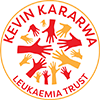[vc_row][vc_column][vc_column_text]
Non-communicable diseases (NCDs) gained prominence as a major cause of ill-health in Kenya about 30 years ago, with cardiovascular diseases due to lifestyle factors taking the centre stage. Over the past 10 years or so, however, cancer has taken centre stage, not only for the increasing number of cases but also for their far-reaching consequences.
Cancer affects anyone and everyone. Unlike the metabolic disorders, one is hard-pressed to outline definitive causative lifestyle or environmental factors, neither is there socio-economic discrimination. Cancer is expensive, and if untreated, it is debilitating and fatal.
The disease comes with the physical, psychological and economic burden that the majority of the population is ill-prepared for it from a diagnostic, treatment and coping strategy perspective.
Blood and bone marrow cancers (haematological cancers) are relatively rare, contributing only to about five-10 percent of all cancers. Acute myeloid leukaemia (AML) one of the haematological cancers, if untreated, results in death within weeks to months from infection, bleeding, or the effects of severe anaemia on vital organs.
The leukaemias as a whole are rare, constituting about three percent of all cancers and AML one percent. To put that into context, consider breast and prostate cancer, which contribute to 12.5 and six percent of all cancers in Kenya, respectively.
There were about 33,000 deaths from cancer in Kenya in 2018, with 3,200 (10 percent) due to blood cancers and 1,300 (one percent) of these being due to leukaemia. The blood cancer deaths figure is likely to be an underestimate since some patients with acute leukaemia die at home or in a hospital before receiving an accurate diagnosis or proper treatment and are not included in the statistics.
AML occurs when the bone marrow, the factory that produces all blood cells, ceases to work properly.
Instead of the normal production and development of white cells, which fight infection, red cells that transport energy around the body and platelets — which protect from abnormal bleeding — a rogue ‘seedling cell’, or stem cell multiplies in large numbers and while still in an immature state, fills out the bone marrow, eventually spilling over into the blood.
These abnormal cells eventually phase out the normal cellular components of the bone marrow and blood (white cells, red cells and platelets), and when that happens, the patient will experience symptoms such as tiredness and weakness, recurrent infections due to marked reduction of white blood cells and bleeding or unexplained bruising due to marked reduction in the number of platelets.
The actual cause of AML is unknown in a majority of cases. The classical textbook risk factors do not appear to be a prominent feature of the disease in the patients that we see and treat in Kenya.
What we do know, however, is that there are several steps or ‘accidents’ that occur at the molecular level in these cells which eventually lead to AML. These molecular accidents result in a complex disorder that is far greater than the sum of all the molecular events.
It is this intricate interaction between these molecular events that ensures that no two cases of AML are identical to each other, and can result in an illness that is difficult to treat and cure.
The backbone of AML treatment is intensive chemotherapy, coupled with meticulous supportive care. The intention is that the chemotherapy destroys the entire leukemic clone, and the bone marrow is given a chance to ‘revert to normal settings’, and regenerate with normal healthy cells.
The chemotherapy is the easy part; the challenge lies in supporting the patient while they await bone marrow and blood cell recovery. The first treatment (induction chemotherapy) that a patient receives mandates a prolonged in-patient stay in the hospital for three to four weeks. The first weeks are dedicated to chemotherapy while the other three involve monitoring of patients, to ensure prompt treatment of infections and administration of red blood cell and platelet transfusions, without which the patient will die.
SUPPORTIVE SERVICES
Fewer than five institutions in Kenya provide services, which can successfully support patients with AML through this intensive treatment. Access to comprehensive transfusion services and close patient support in dedicated haematology units or wards has been a major contributor towards improved outcomes in patients with AML over the last 40 years.
Our reality is that many patients do not receive treatment because of a lack of access to resources. In some of our facilities, there is a high rate of death because of a lack of supportive services, after chemotherapy.
There is an urgent need for a robust national transfusion service and dedicated treatment units managed by trained medical and nursing staff.
The response to treatment varies, and patients who attain a complete remission after chemotherapy may have a higher chance of long-term survival.
However, a proportion of patients do not respond to induction chemotherapy, exhibiting refractory disease or early relapse, after the initial response. These patients will have to undergo a stem cell (bone marrow) transplantation procedure to have a chance of long-term survival.
By Dr Anne Mwirigi, Consultant haemato-oncologist at Aga Khan University Hospital, Nairobi. | Email: nki_mwirigi@hotmail.com
[/vc_column_text][/vc_column][/vc_row][vc_row][vc_column][/vc_column][/vc_row]



